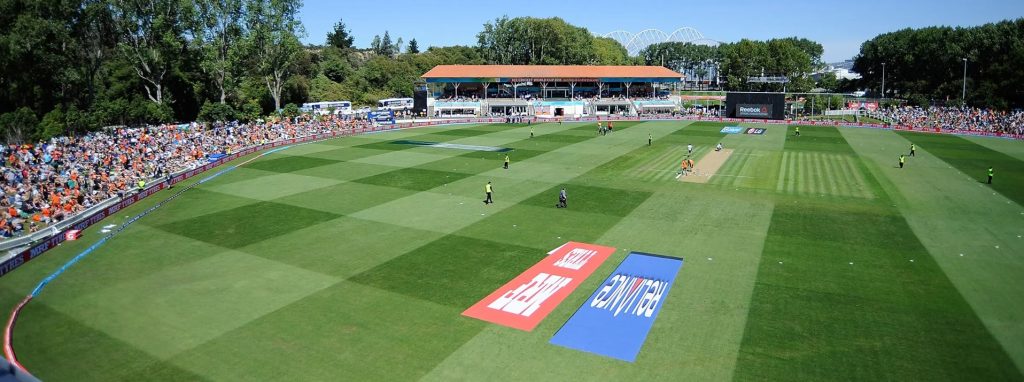E2BET: University Oval: The University Oval, located in Dunedin, New Zealand, is one of the country’s southernmost international cricket grounds. Known for its picturesque setting within the Otago University campus and its relatively compact size, the ground plays host to both domestic and international matches. While not the largest in terms of seating capacity or field dimensions, its unique layout often makes for interesting cricketing encounters.
One of the critical aspects influencing game dynamics is the boundary length, which can vary depending on the pitch being used, temporary stands, and ground conditions. This article provides a comprehensive look at the boundary measurements at University Oval and how they compare with international standards.
Overview of Dunedin Cricket Ground
| Feature | Detail |
|---|---|
| Official Name | University Oval |
| Location | Logan Park, Dunedin, New Zealand |
| Opened | 1920s (as a sports ground) |
| First Test Match | January 4–8, 2008 (NZ vs BAN) |
| Capacity | ~3,500 (expandable with stands) |
| Ends | Northern End, Southern End |
| Surface | Grass |
Boundary Dimensions
General Boundary Layout
Due to the ground’s oval shape and surrounding infrastructure, boundary distances at Dunedin can vary significantly depending on which pitch is used in the block. The dimensions are generally on the shorter side by international standards, making it a favorable venue for batsmen, especially in limited-overs formats.
Average Boundary Distances (Test & ODI Setup)
| Direction | Average Distance (Meters) | Notes |
|---|---|---|
| Straight (North-South) | 65 – 70 m | Varies by pitch strip |
| Square (East-West) | 60 – 64 m | Relatively shorter |
| Mid-wicket / Cover | 62 – 66 m | Medium range |
| Third Man / Fine Leg | 58 – 62 m | Shorter, especially towards stands |
| Long-on / Long-off | 65 – 68 m | Deepest parts of the ground |
Note: ICC recommends a minimum boundary of 59.43 meters (65 yards) for international matches, though some allowances are made for older or spatially restricted grounds like University Oval.
Comparison with Other New Zealand Grounds
| Ground Name | Straight Boundary | Square Boundary | Remarks |
|---|---|---|---|
| University Oval (Dunedin) | 65–70 m | 60–64 m | Shorter side boundaries |
| Eden Park (Auckland) | ~55–60 m | ~64–70 m | Very short straight boundaries |
| Basin Reserve (Wellington) | 70–75 m | 68–72 m | Larger playing area |
| Hagley Oval (Christchurch) | 70–80 m | 65–70 m | Standard large ground |
| Seddon Park (Hamilton) | 65–75 m | 60–68 m | Similar in size to Dunedin |
Impact of Boundary Size on Match Play
The relatively short square boundaries and moderate straight boundaries have a notable impact on the way matches are played at Dunedin:
1. Batting-Friendly Conditions
Shorter square boundaries offer value for shots like cuts and pulls, encouraging aggressive play, especially in ODIs and T20Is.
2. Bowling Strategy
Bowlers often adjust lines to either protect the shorter sides or entice mis-hits toward longer boundaries. Spinners, in particular, need to flight the ball with care.
3. Field Placement
Captains frequently place boundary riders early in innings to cut off boundaries, and ground-specific strategies become critical.
Unique Characteristics of University Oval
- Wind and Weather: Dunedin’s coastal location means matches are often played in cool, windy conditions, which can aid seamers.
- Outfield Speed: Generally on the slower side due to moisture, which slightly balances out shorter boundaries.
- Seating and Proximity: Temporary stands often bring the spectators close to the field, further limiting boundary expansion.
Future Prospects and Ground Modifications
Conclusion
While University Oval may not boast the grandeur or size of more prominent cricket grounds, its short to moderate boundary lengths make it an exciting venue for cricket fans. These dimensions ensure dynamic contests that test bowlers’ adaptability and reward aggressive stroke play, especially square of the wicket. As one of the few international venues in the deep south of New Zealand, it holds a special place in the nation’s cricketing landscape.


